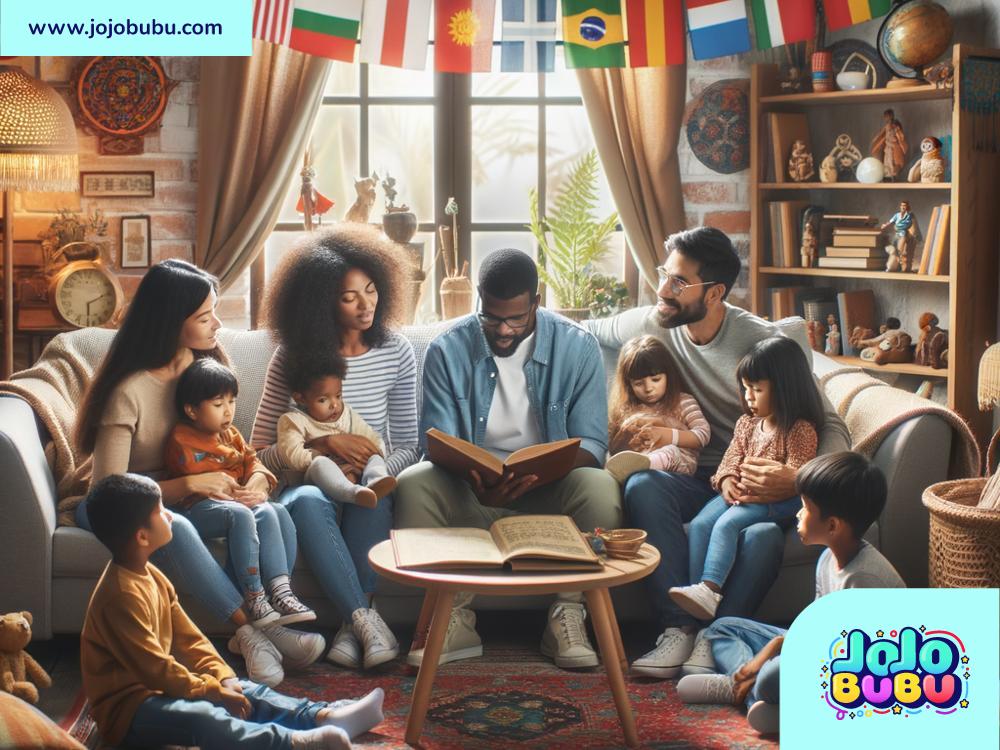Navigating Interfaith or Multicultural Families: Tips for Building Harmony
Today, many families are formed by people from different cultural backgrounds or belief systems. These interfaith or multicultural families are beautiful examples of diversity, but they can also bring unique challenges. How do you create harmony while respecting everyone’s values, traditions, and beliefs? With open communication, mutual respect, and a bit of creativity, it’s possible to build relationships that celebrate differences instead of letting them cause conflict. Here’s how you can navigate these connections in simple, practical ways.
1. Start with Open Communication
One of the most important steps in bridging cultural differences is talking openly. Before you assume how someone feels about a tradition or belief, take the time to ask.
For example, if your partner grew up in a different religion than you, you might not understand all their views or practices. Instead of making guesses, ask questions like:
- “What does this holiday mean to your family?”
- “Is there a practice or belief that’s very important to you?”
- “How can we make sure both our traditions feel respected?”
Open communication allows everyone to feel heard. Speak honestly about any concerns or needs you may have as well, but always approach the conversation with kindness. This sets the tone for mutual understanding.
2. Focus on the Values You Share
Even in a family with big cultural or religious differences, there are likely shared values that can unite you. You may all value love, kindness, respect, hard work, or family time. Focusing on what you have in common helps build a strong foundation.
For example, if one person in the family celebrates Christmas and another celebrates Ramadan, you can both appreciate the importance of togetherness and generosity during these times—values that connect the two traditions beautifully.
3. Educate Each Other About Your Cultures or Beliefs
A great way to bring unity into an interfaith or multicultural family is through education. Teaching each other about your individual cultures or faiths can eliminate misunderstandings and build respect.
This might mean sharing favorite childhood stories about a specific holiday, explaining the meaning of certain rituals, or cooking traditional dishes. When you take time to teach others about your way of life, they feel included rather than excluded or confused.
Similarly, try to actively learn about your family members’ traditions. Read books, watch documentaries, or attend a celebration with an open mind. Showing genuine interest in their customs demonstrates respect and builds closeness.
4. Create New Shared Traditions
One wonderful way to make everyone in the family feel included is to create traditions that are unique to your household. This is especially helpful for multicultural families with kids. Rather than worrying about which cultural custom “wins,” you can blend aspects of both or start something entirely new!
For instance:
- Combine elements of two holidays. You could make a Thanksgiving meal that includes both American dishes and food from another culture.
- Celebrate small milestones or events together, like weekly family movie nights or a “gratitude jar” tradition where everyone writes something they’re thankful for throughout the year.
- Invent new rituals that focus on togetherness rather than cultural differences, such as having everyone share one thing they learned or loved about each family member during dinner.
These special shared traditions help everyone feel like they belong, regardless of their background.
5. Respect Boundaries
While it’s important to celebrate differences and create harmony, it’s equally important to respect boundaries. There may be traditions or practices that one family member cannot compromise on because they are deeply tied to their personal faith or identity.
For example, if someone in your multicultural family chooses not to eat certain foods due to religious reasons, make sure you respect their choice—without trying to force them to “fit in.” Similarly, if certain celebrations or rituals are sacred to your partner or in-laws, allow them to participate freely without guilt.
Respecting boundaries means acknowledging that no one culture or religion needs to dominate. Instead, everyone’s needs and choices can coexist.
6. Teach Children to Embrace Diversity
If your interfaith or multicultural family has children, teaching them to embrace diversity is a gift that will last a lifetime. Children who grow up witnessing mutual respect and understanding in a family learn to extend those values into other relationships as they grow.
You can help them celebrate their blended heritage by:
- Teaching them about their ancestors on all sides of the family.
- Helping them participate in different traditions even if they don’t fully “choose” one particular faith or identity.
- Introducing them to stories, books, and media that promote cultural understanding and inclusion.
Encouraging kids to ask questions and learn about diversity gives them tools to navigate a multicultural world with confidence.
7. Keep Evolving
Every family evolves over time—and interfaith or multicultural families are no different. The way you celebrate, communicate, and compromise may change as you learn and grow together. Be open to adjustments! As children grow older or new family members join, you may need to revisit conversations, redefine boundaries, or invent new shared rituals. Flexibility is key to keeping relationships strong.
Conclusion
Navigating interfaith or multicultural families can be a meaningful journey of connection and growth. By prioritizing communication, celebrating shared values, learning about each other’s traditions, creating new family customs, respecting boundaries, and teaching kids about diversity, you can build a home filled with love and mutual respect. Instead of seeing differences as obstacles, embrace them as opportunities to learn from one another and develop a richer, more inclusive family life. After all, life’s biggest blessings often come from embracing the beauty of diversity.

